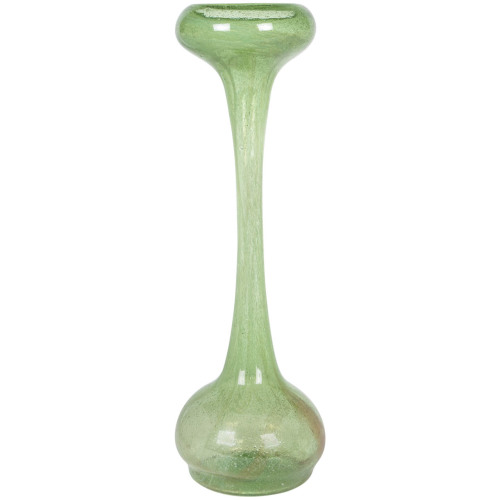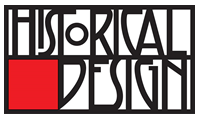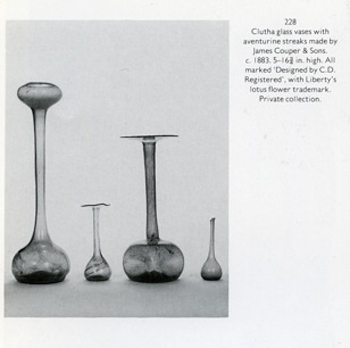Product Description
Christopher Dresser / James Couper & Sons Aventurine blown glass Clutha vase c. 1895



CHRISTOPHER DRESSER (1834-1904) UK
JAMES COUPER & SONS Glasgow
Clutha vase c. 1895
Aventurine blown glass with iridescent gold streaks and internal bubbles
Illustration: Christopher Dresser, Widar Halen (Oxford: Phaidon, Christies Limited, 1990) p. 196, illust. 228.
For more information: Liberty Style: the classic years, 1898-1910, Mervyn Levy (New York: Rizzoli International Publications, Inc., 1986); Christopher Dresser: the power of design, Christopher Wilk (New York: Zurland – Zabar, 1993).
H: 19 3/8 ”
Christopher Dresser / James Couper & Sons Aventurine blown glass Clutha vase c. 1895
PIERRE D’AVESN (1901-1984)
VERLYS Rouen, France
“Egyptian Fan” vase c. 1934
Satin crystal, hand finished in the form of a “winged” vase with “Egyptian Fan” motif
Model illustrated: Verlys catalogue of c. 1934, Pierre d’Avesn Catalogue raisonné, 1920 to 1930 (by Philippe Decelle)
H: 8 ½” x W: 11”
WILLEM COENRAAD BROUWER (1877-1933) The Netherlands
POTTERIJ VREDELUST Leiderdorp, The Netherlands
Vase with handles c. 1905
Brown glazed red clay with tan light brown cut out overlaid and sgraffito decoration in a stylized organic motif, two applied looping handles
Marks: Brouwer 139 (incised)
For similar work see: Dutch Decorative Arts 1880-1940, eds. Titus M. Eliëns, Marjan Groot, Frans Leidelmeijer (New York: Battledore Ltd.,1997),p. 56; Leven in een verzameling: Toegepaste kunst 1890-1940 uit de collectie Meentwijck (Laren: Singer Museum, 2000), illus. 76, 77, p. 74.
For more information on Brouwer see: Art Nouveau en Art Deco in Nederland: verzamelobjecten uit de vernieuwingen in de kunstnijverheid van 1890 tot 1940, Frans Leidelmeijer and Daan van der Cingel (city unknown: Meulenhoff/ Landshoff, 1983), pp. 80-82.
H: 6″ x Dia: 5″
